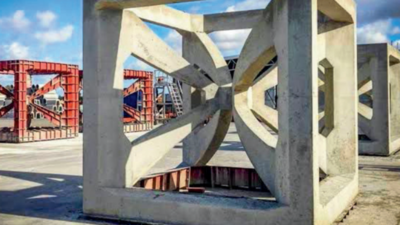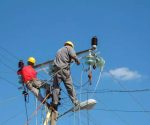‘Bringing an island back to life’: Tamil Nadu govt’s Rs 50 crore effort to restore Kariyachalli with 8,500 reef modules, local divers | Chennai News – Times of India

Villagers from Tuticorin will soon be diving into the sea, not for recreation, but as part of a bigger mission to help revive a vanishing island in the Gulf of Mannar. The Tamil Nadu govt has launched a Rs 50cr conservation project to restore Kariyachalli Island, one of 21 ecologically fragile islands in the rapidly eroding Gulf of Mannar Marine National Park. The initiative, part of the TN Sustainably Harnessing Ocean Resources (TNSHORE) programme, aims to boost climate resilience, preserve marine biodiversity and support sustainable livelihoods for coastal communities.Located off Tuticorin coast, Kariyachalli island, a small strip between India and Sri Lanka, serves as a natural barrier against cyclones and tsunamis, a function brought into focus during the 2004 tsunami. The island is surrounded by rich coral reefs and seagrass beds that support diverse marine life and provide livelihood support to thousands of small-scale fisherfolk.The island, however, has lost more than 71% of its land area, shrinking from 20.85ha in 1969 to 5.97ha in 2018, due to sea level rise and degradation of surrounding coral reefs and sea-grass.Under this initiative, the govt will use 8,500 multipurpose artificial coral reef modules — designed by IIT Madras based on wave dynamicsand bathymetry studies — to protect the island’s shoreline, reduce wave energy and increase sediment deposition. “These are ferrocementand-steel trapezoidal structures. Corals will be placed on them and the structures submerged. We will be roping in 300 local fishing villagers to dive in, to place these structures. The heights will vary based on terrain. The growth of corals will be monitored regularly,” says environment secretary Supriya Sahu. The modules, three tonnes each and perforated to support nutrient flow, are expected to act as wave breaks and create marine habitats. The island’s water depths too have been reduced to half a metre from 3m years ago, say scientists. This project may help get back land area. The model being used here is similar to the interventions at Vaan Island that began in 2015 and, within five years, led to measurable gains in land area, shallower waters, and coral regrowth involving more than 37 species.At Kariyachalli, plans include scientifically restoring two acres of degraded coral reef and three acres of seagrass beds, ecosystems that play a critical role in carbon sequestration, biodiversity conservation and shoreline protection. “A good sea-grass cover will invite dugongs (sea cows) which feed on seagrass. It will boost the ecological character of the islands, and also open up eco-tourism initiatives,” says Supriya, adding that if interventions aren’t done, the island will be lost by 2030. “It takes between five and seven years for an artificial reef to mature enough to resemble a natural reef, with corals growing at about 1cm per year. Work will begin in a month.”Heat resilient corals must be grown in the nurseries, says Ramasubramanian R of Coastal and Marine Systems at M S Swaminathan Research Institute. “Only these can survive rising temperatures. If some corals die as the reef develops, new colonies can emerge. This approach has seen success globally but needs constant monitoring and nurturing of corals in laboratory conditions.” The modules will provide nutrition to organisms attached to them. Placed at 20m gaps, they will also improve fish production.Villagers from Sippikulam and Pattinamaruthoor which are within a 12km radius of the island, will be engaged through capacity building, training, and support for eco-tourism and alternative livelihoods.
















